Pilea glauca remains a much loved – if a little enigmatic – plant species.
With dainty metallic gray-green leaves and warm red stems, its unique character lends itself to many names like “Pilea Aquamarine” or “Pilea Silver Sparkle” (but technically, it doesn’t have a confirmed name).
In fact, it seems no one can really agree on what exactly this plant is. You might even know it by Pilea glaucophylla or Pilea libanensis.
But regardless of its name, one thing that’s undeniable is that it is absolutely stunning, and luckily for us, a dream to care for.
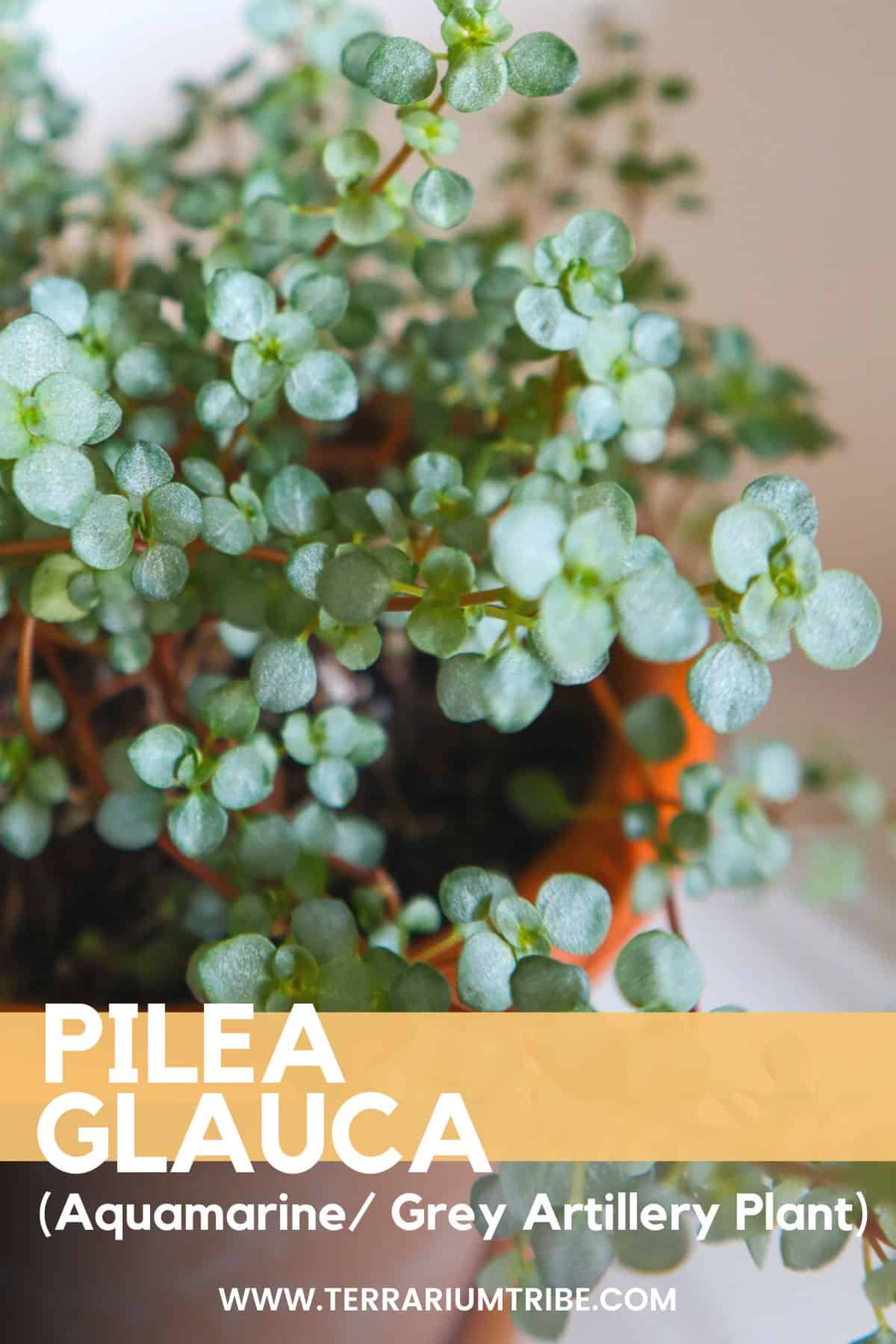
What is Pilea glauca?
This trailing plant looks wonderful when maintained as a bushy houseplant and makes a worthy addition to just about any terrarium/vivarium setup.
It makes a fantastic ground cover and works as a cascading plant if mounted high on a background or hardscape.
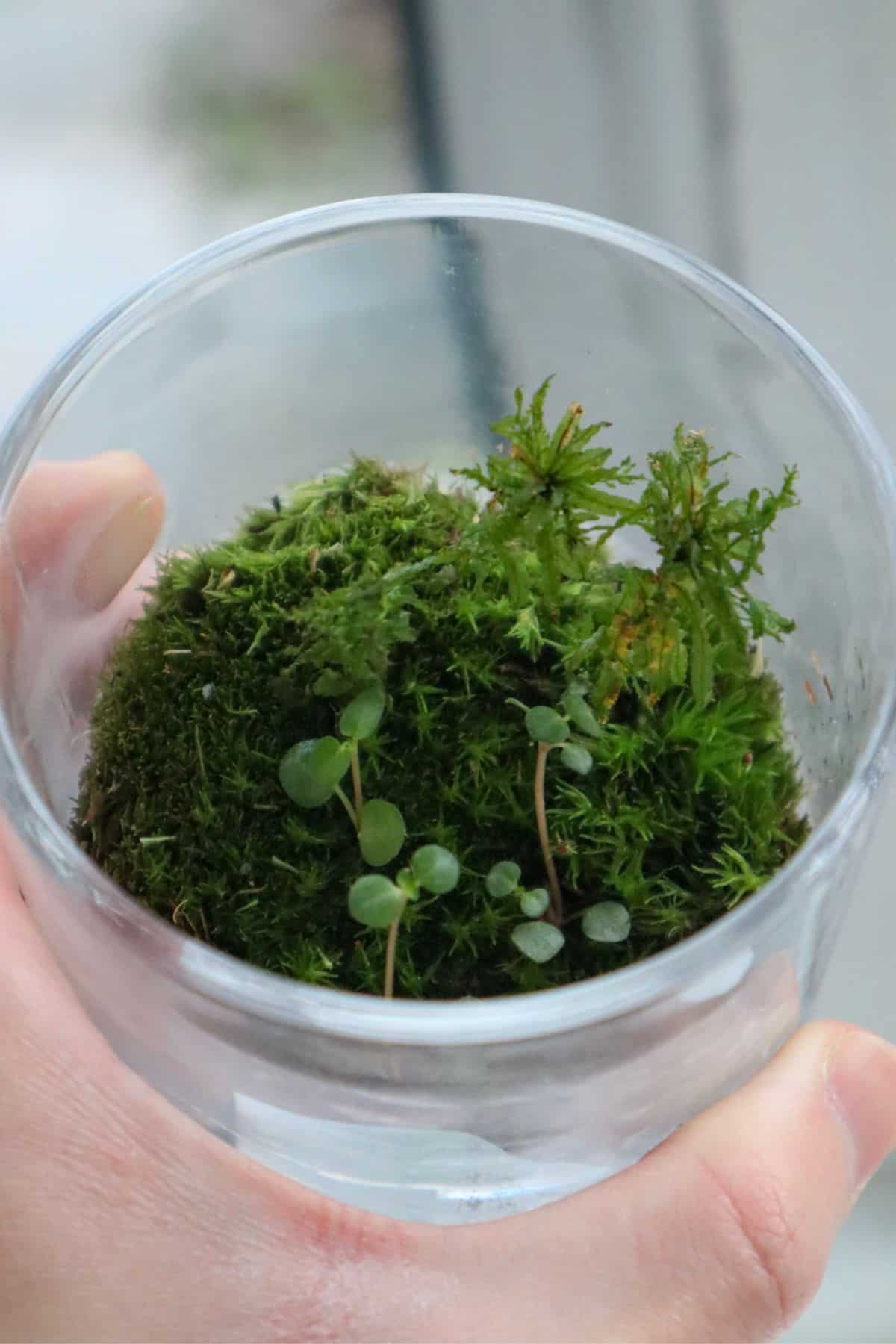
Native to the rainforests of South America, Pilea glauca is super easy to grow and has no unreasonable care requirements beyond those of a typical tropical plant.
So, let’s dive in!
Where to Buy Pilea glauca
See the links below to purchase from reputable terrarium plant shops and marketplaces (may include affiliate links).
Pilea glauca Care
| Plant Type | Vine |
| Lighting | Bright, indirect light |
| Temperature | 55-80°F (12-26°C) |
| Watering | Regular, even moisture |
| Humidity | High humidity (60-90%) |
| Growth | 3-4 inches |
Pilea glauca Light
While this plant can handle a couple of hours of direct sunlight per day, it will do best with lots of lovely bright, indirect light.
- Too much exposure to sunlight, and you risk scorching the delicate foliage.
- Not enough bright light and you’ll get a very leggy plant, all stem, and few leaves (though I don’t find this particularly problematic).
If you’re in the Northern Hemisphere, a North-facing window sill would be best, as it gets exclusively indirect sunlight throughout the day, and an East-facing window would be great too, with a little direct light in the mornings.
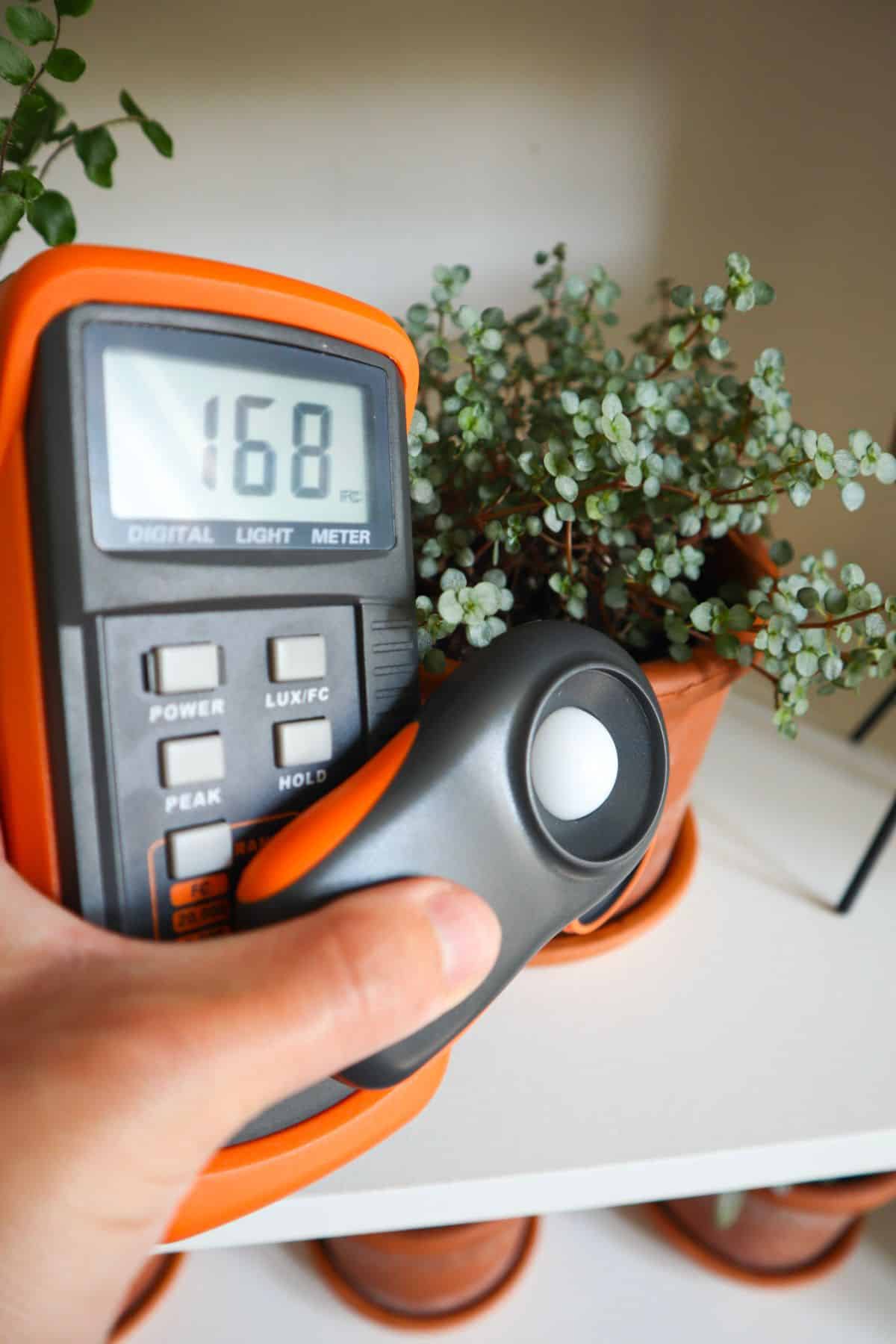
If you can’t supply this, you can use the next best thing – artificial light.
A grow lamp works a treat and is a great failsafe.
Watering
Pilea glauca is a tropical plant at heart and will thrive with regular, even moisture.
Though as a typical tropical plant, it’s also prone to rot if left in an over-saturated substrate for too long, making excellent drainage the be-all and end-all.
If you’re keeping yours as a houseplant, make sure to choose a pot with drainage holes. Water when it’s feeling a little dry to the touch and tip away any excess water in the drainage tray.
Just don’t leave it to dry out completely between waterings – it’s definitely a moisture-loving plant, and you’re more likely to run into under-watering issues than overwatering.
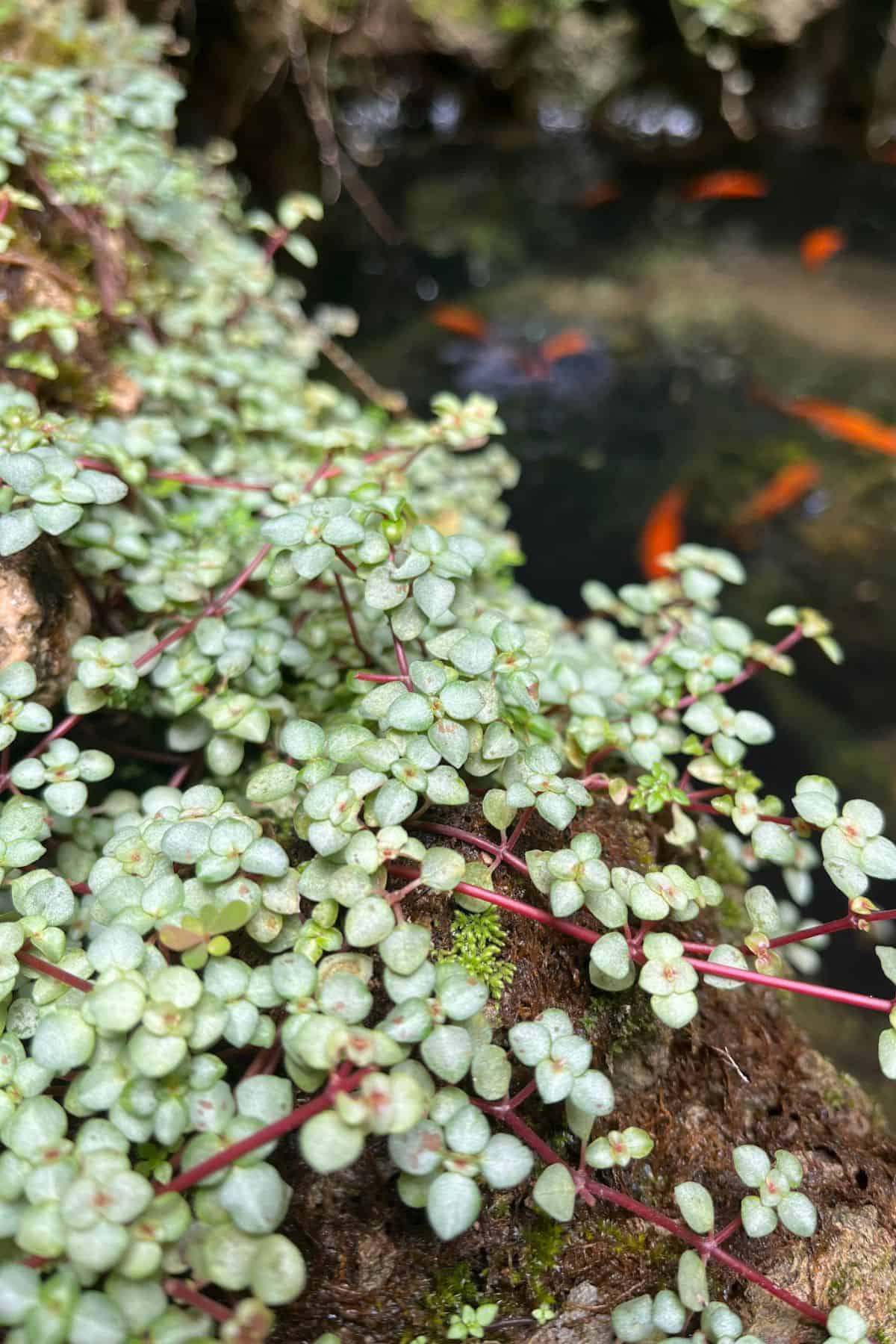
In a terrarium/vivarium build you’ll need to add a little water at a time so you don’t drench the system (it’s much easier to add than remove water). Make sure to use a drainage layer and choose a well-draining soil.
Which leads us nicely to…
Pilea glauca Soil / Substrate
This adaptable plant isn’t overly picky when it comes to the substrate.
A light, well-draining mix with good water retention should be the ideal combination for growth. It’s a good idea to use a balanced fertilizer every month or so, too (if you’re growing in a pot).
Of course, the importance of getting the substrate just right is much more critical in a closed system than as a houseplant.
For a terrarium build, I like to use coco coir as a base and then add supplements like orchid bark to boost aeration, drainage, and water retention. Plus, earthworm castings can bring a lot to the mix as a natural fertilizer.
👉 Our Premium Terrarium Substrate Mix is a natural fit here!
Temperature & Humidity
Pilea glauca is often grown as a houseplant, so it’s very forgiving in terms of temperature.
Seriously, anything around 55-80°F (12-26°C) will do just fine.
And with humidity, anything above 60% will be appreciated – but I’d aim higher if possible.
You don’t need expensive solutions to boost humidity in the home. I like to leave full watering cans around the room to evaporate – it works fantastically.
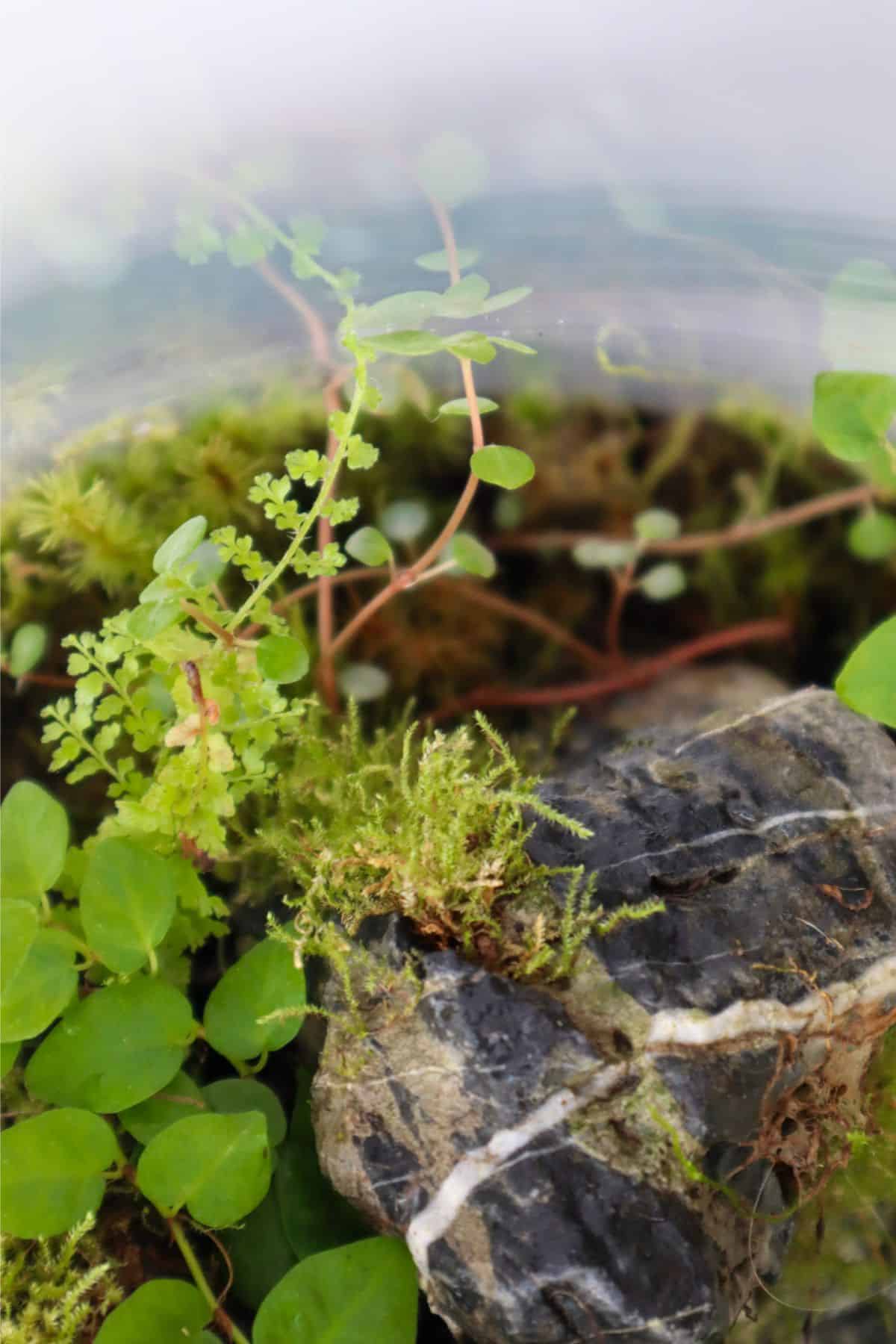
My plant has had nothing but untamed growth after popping in a terrarium.
Pilea glauca Flowers & Growth (Hanging & Trailing)
The trailing foliage of Pilea glauca can rapidly form a thick ground cover for a terrarium. Pruning it back will keep it compact and dense, but it can be nice to let it naturally weave around a container.
Depends on what kind of look you’re going for really.
The same goes if you’re keeping yours as a houseplant. You can trim as you please or let it cascade over the pot’s edge into a lovely hanging vine.
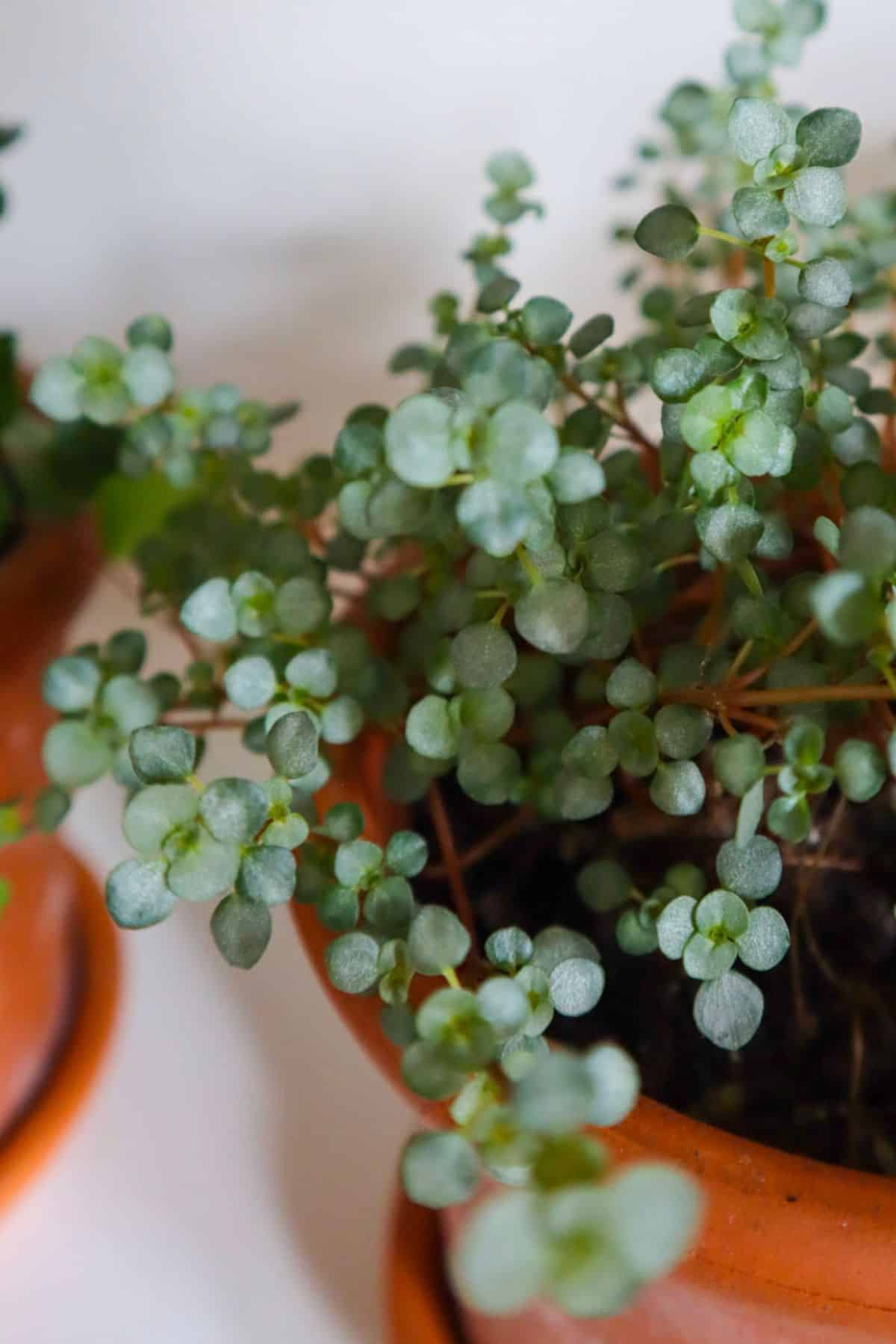
If delightful little silver leaves weren’t enough, look out for the most adorable little pink flower clusters you ever did see.
And they’re about as impressive as they are attractive.
These inconspicuous flowers can – and will – explode pollen into the air after watering (hence another name it goes by, “Gray Artillery Plant”).
I have all of my fingers crossed that I’ll get some blooms this spring/summer.
Pilea glauca Propagation
Pilea glauca is an incredibly easy plant to propagate through stem cuttings.
Simply snip off a healthy new growth with at least one node and a couple of leaves, then plant it stem first into the substrate.
Or, you can simply just “chuck it in” a terrarium and let it work its rooting magic by itself, no planting, no nonsense – this is the method I choose 90% of the time.
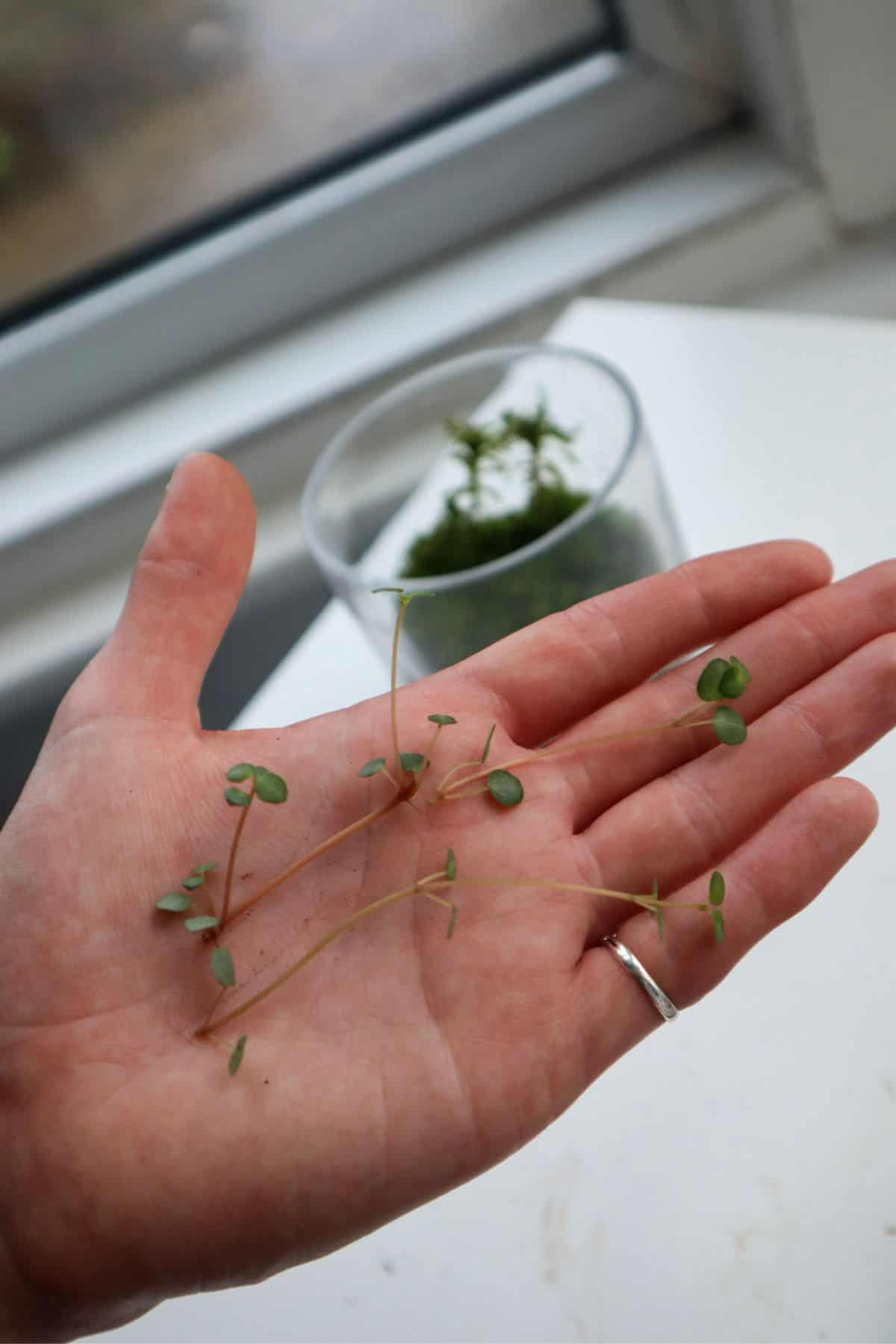
They can be propagated in water, but it’s by far the least effective in my experience.
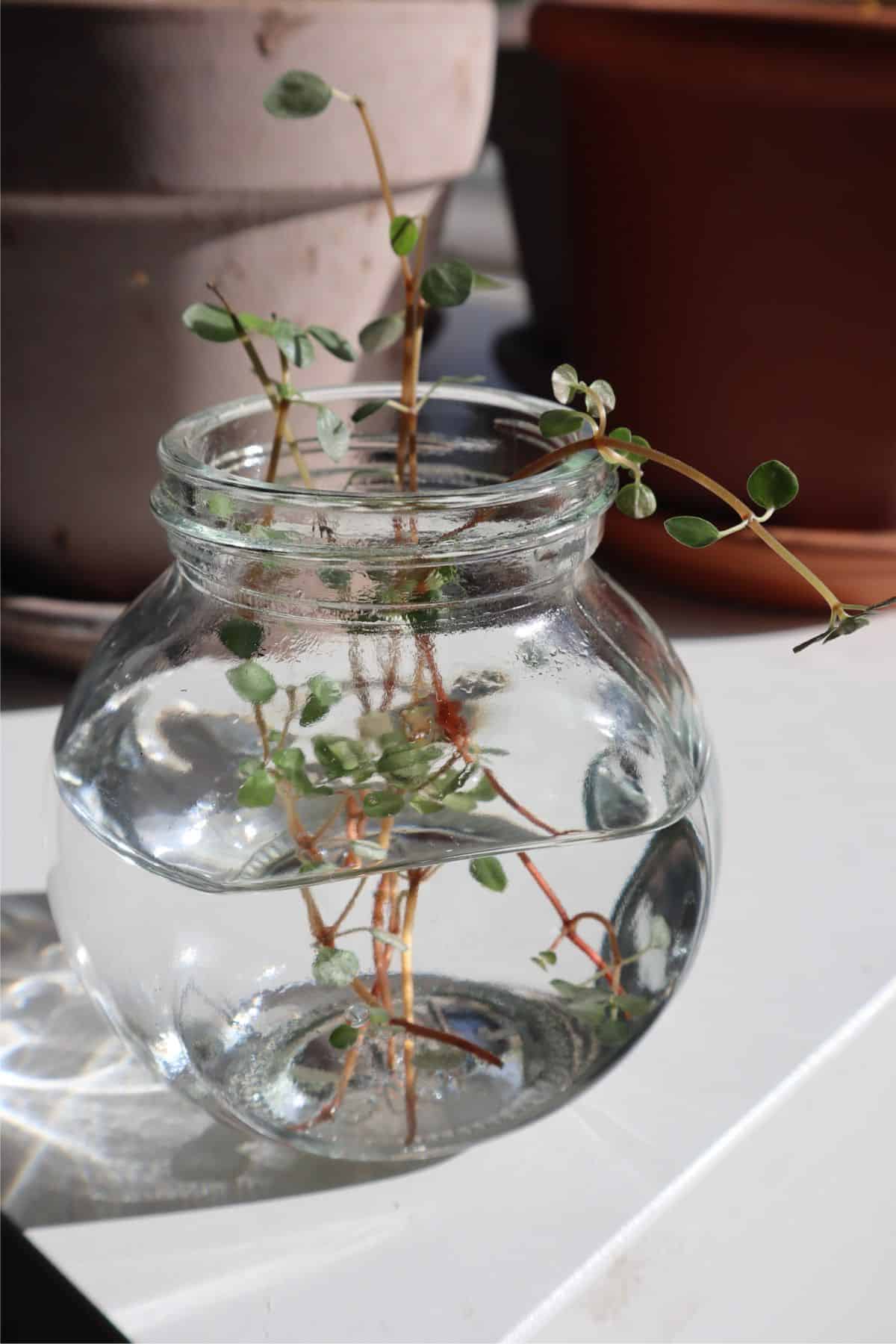
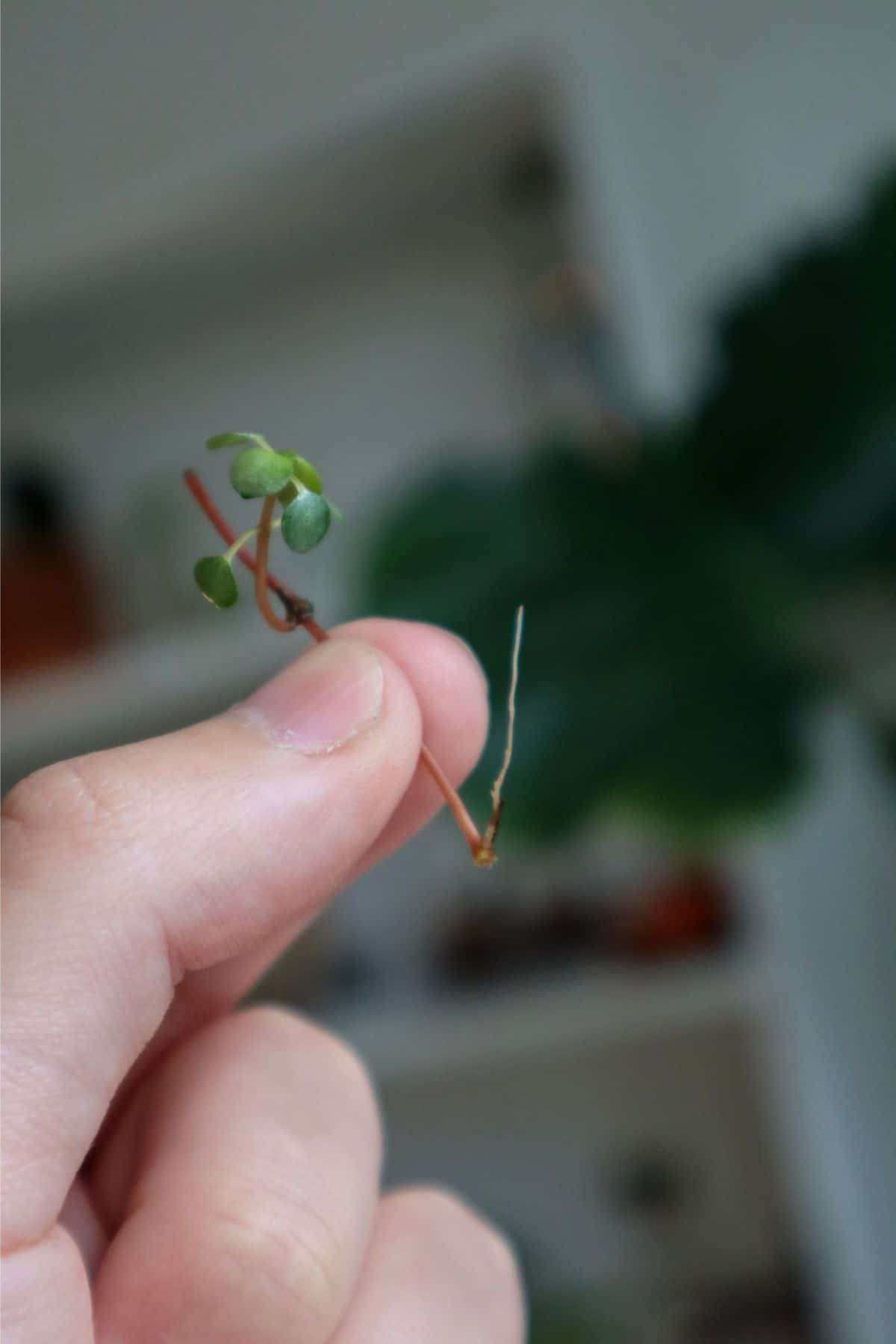
They’ll do much better in a tropical environment with lots of moisture.
Varieties & Similar Plants
So little is known about Pilea glauca and its origins, there have been no cultivars or varieties identified just yet.
It’s a pretty unique Pilea, to be honest.
However, it shares a strong resemblance to Pilea depressa with its abundance of tiny leaves and trailing growth habit.
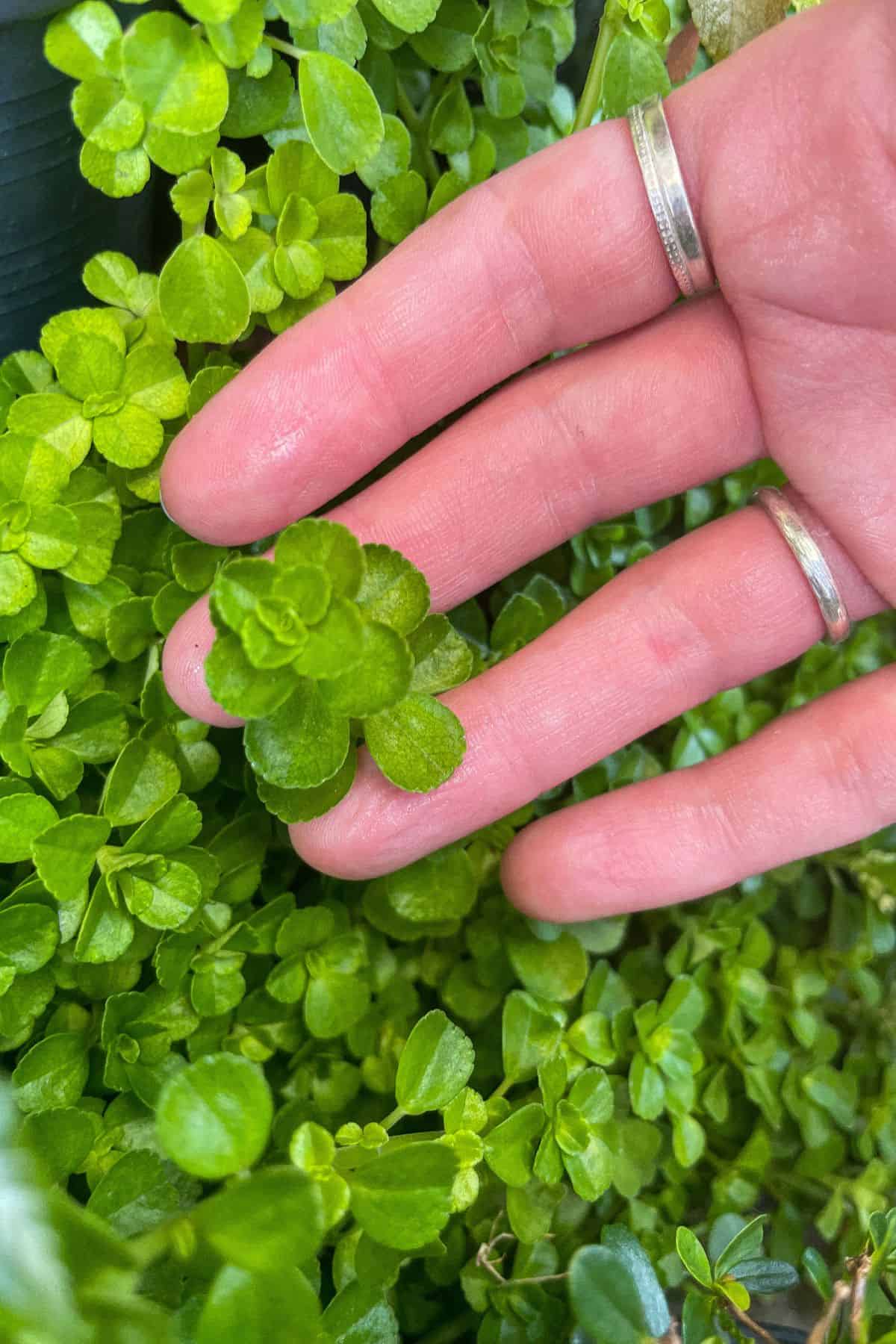
There are over 700 types of Pilea, and as a general rule, they’re typically suitable for terrariums.
Some of my favorite terrarium picks are Pilea cadierei, Pilea involucrata, and Pilea mollis (Moon Valley). And, of course, who doesn’t have a spare Chinese Money Plant pup lying around? They were practically born to be popped in a terrarium!
